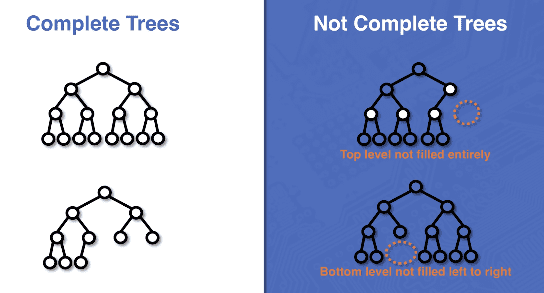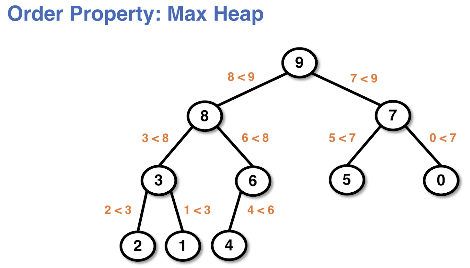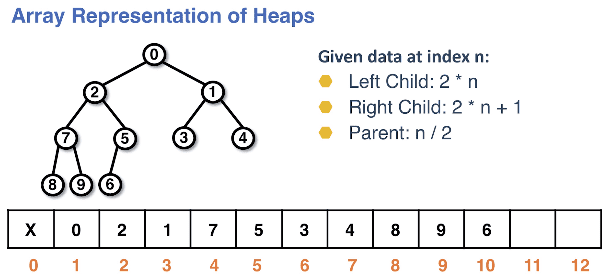binary heaps
Binary heaps are the most common form of heap structure. There are more types; however, often times when discussing a heap it will be a binary heap.
Heaps are another binary tree type with an additional property completeness.
This property lends itself to an array implementation which is typically faster at a low-level when compared to a tree node implementation.
Heaps have a different order property than BSTs. This order property changes how we look at things like add/remove operations.
Heap characteristics
Heaps are a binary tree, but not a binary search tree.
- Have the shape property of a binary tree, every node can have at most two children
- Must be complete (see below screenshot)
- This is easy to implement with an array
- Order properties of the heap characterize the type:
- min heap - the smallest element in the data set is the root
- The data in the children are larger than the data in the parent
- There is no direct relationship between the siblings or two children
- The data in every parent is smaller than it's children
- max heap - the largest element in the data set is the root
- The data in the children are smaller than the data in the parent
- There is no direct relationship between the siblings or two children
- The data in every parent is larger than it's children
- min heap - the smallest element in the data set is the root
- When implementing a heap with a backing array we begin the indexing at index 1, omitting index 0
Example of complete and incomplete trees:
Min heap example:
Max heap example:
Array representation of heaps
The data is placed in a heap based on a level order traversal.
The min heap is illustrated within the array, wherein the backing array has no gaps and is complete. This allows us to:
- Compute the indexes of a parent and its children
- The backing array will not have gaps
- Given a node
nwe can easily find the left and right children
Finding children given an index n:
- Left child:
2 * n - Right child:
2 * n + 1 - Parent:
n / 2
Array representation of heaps:
Heap use cases
- Designed for accessing the root
- Not designed for arbitrary searching
- No better than searching in an ArrayList: O(n)
- Often used to back a priority queue
- This is because they always keep the largest or smallest item at the root, O(1)
- Ex: Emergency room waitlist



